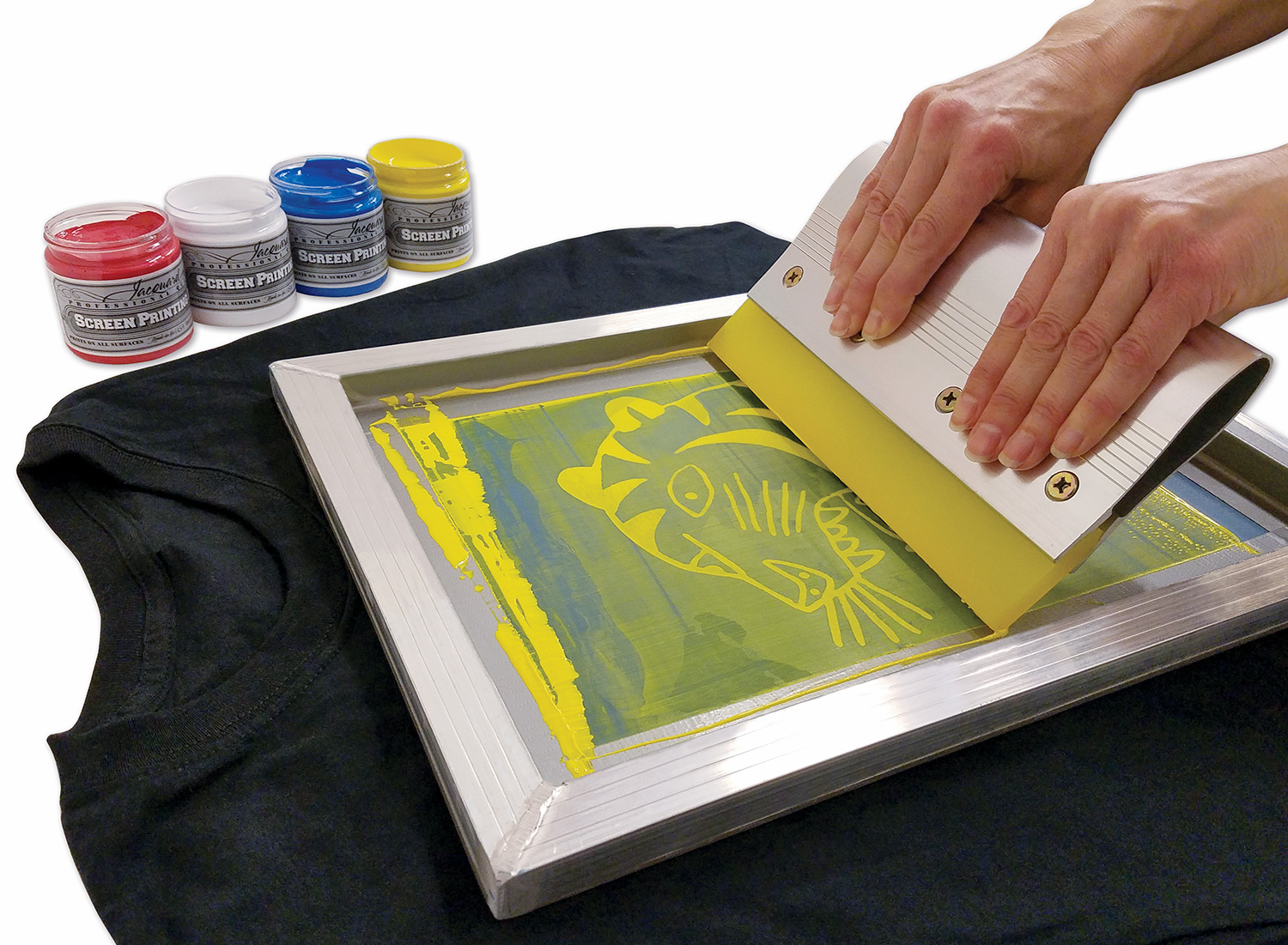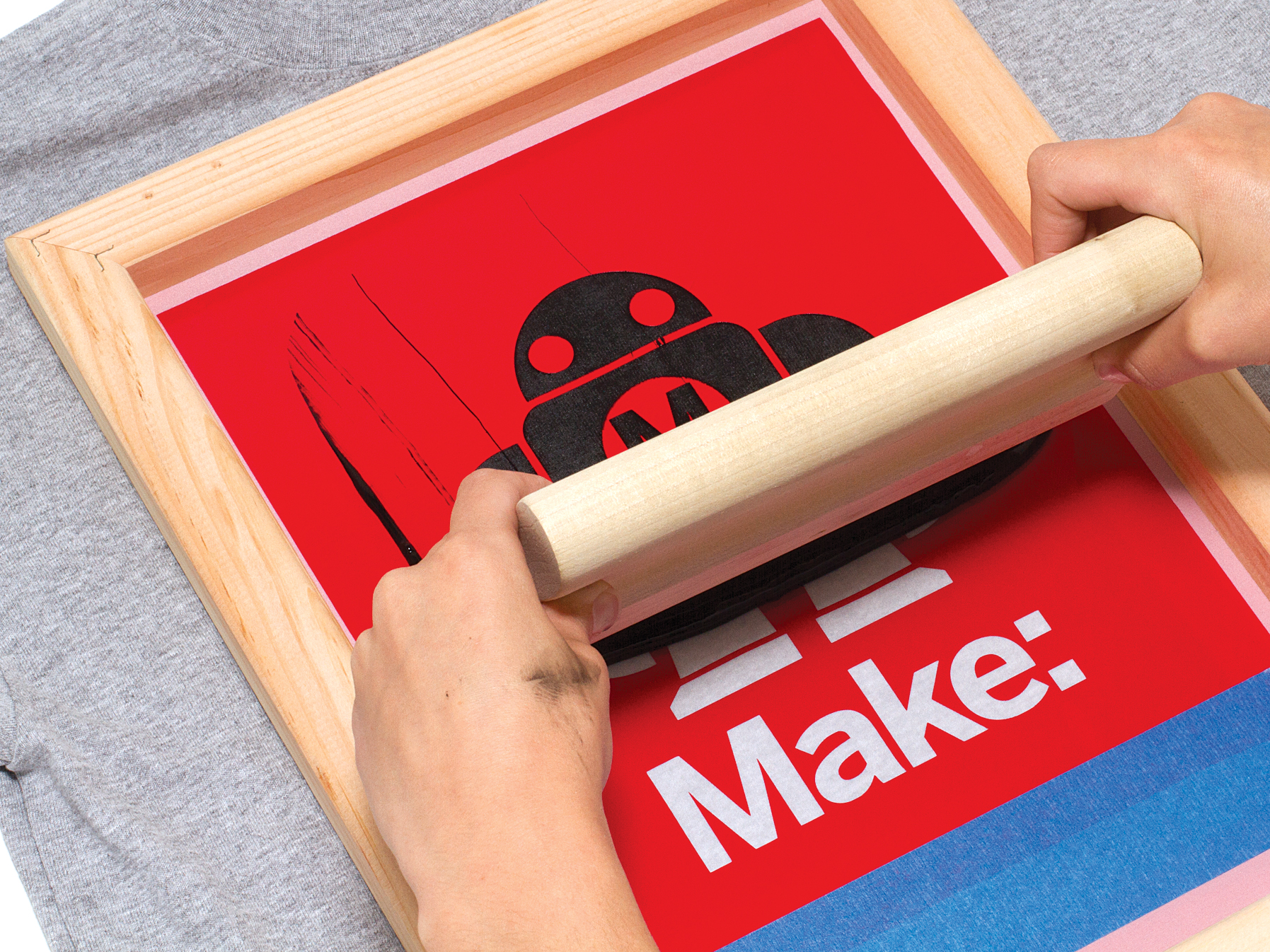ChatGPT said: 10:9 Design Embroidery success stories: how clients enhanced their brand identity
Discover the Various Kinds Of Screen Printing Techniques for Your Next Project
Screen printing provides a varied variety of techniques that can boost any type of creative task. From conventional methods like serigraphy to modern technologies such as direct-to-garment printing, each method has its unique advantages. Specialized options, including environmentally friendly and metallic inks, present even much more opportunities. Recognizing these strategies can significantly affect the final result. However, the difficulty hinges on choosing one of the most ideal method for certain needs and desired effects. What elements should one think about?

The Essentials of Screen Printing
Although screen printing might seem complex, it is fundamentally a simple procedure that entails moving ink through a mesh screen onto numerous surface areas. The technique begins with the creation of a pattern, which specifies the design to be published. This stencil is connected to a mesh screen, normally made from polyester or nylon. Once the stencil is in location, ink is put on the screen and pressed through the mesh using a squeegee, resulting in the wanted pattern being printed on the underlying material.
Screen printing can be performed on a wide array of substrates, consisting of paper, fabric, and plastic, making it a functional option for various tasks. The process enables elaborate layouts and vivid colors, making it prominent in industries such as style, art, and advertising. Recognizing these fundamentals outfits people with the fundamental understanding needed to check out advanced methods in screen printing.
Standard Screen Printing Techniques
Conventional screen printing methods have actually been employed for centuries, protecting the craftsmanship and creativity of this approach. This method makes use of a mesh screen to move ink onto a substrate, such as material or paper, enabling lively and long-lasting designs. The process starts with creating a pattern, which blocks certain locations of the screen to control where the ink will certainly be applied.
One prominent strategy is serigraphy, commonly utilized for limited versions and artistic prints. Another is the usage of water-based inks, which are green and supply a soft feel on textiles - 10:9 Design Abilene. Additionally, typical techniques can consist of manual printing, where craftsmens use ink with a squeegee, making certain precision and interest to detail
These methods continue to be valued in the industry for their responsive top quality and the one-of-a-kind textures they produce, interesting both customers and designers who appreciate the heritage of screen printing.
Digital Screen Printing Innovations
As the demand for faster production and personalization in the printing market has actually risen, digital screen printing technologies have arised as a game-changer. This technology blends conventional screen printing methods with digital procedures, permitting quick prototyping and detailed designs that were formerly challenging to attain. One considerable innovation is the intro of direct-to-garment (DTG) printing, which helps with premium, full-color prints on numerous textiles without the need for screens. Furthermore, innovations in ink formulas have led to environmentally friendly options that preserve vivid colors while minimizing ecological effect. Making use of automated systems additionally streamlines manufacturing, lowering labor expenses and enhancing precision. These developments not just accommodate small batch orders and individualized designs but likewise permit quicker turnaround times, making them ideal for businesses concentrated on meeting customer needs in a hectic market. Digital screen printing, subsequently, stands for an essential advancement in the domain of printing strategies.
Specialty Screen Printing Approaches
Checking out specialty screen printing techniques discloses a diverse range of strategies that push the boundaries of creative thinking and functionality in the printing industry. Amongst these, glow-in-the-dark inks give an one-of-a-kind visual result, making designs come to life in low-light conditions. Metallic inks, understood for their shimmering finish, include a touch of deluxe to printed materials. An additional innovative technique is discharge printing, which gets rid of dye from the textile rather of including ink, leading to a soft, classic feeling. High-density printing produces an increased texture externally, enhancing responsive involvement. Furthermore, water-based inks are obtaining appeal for their vibrant shades and reduced ecological influence. Each of these specialized techniques deals with details design needs, making it possible for brand names and musicians to develop standout products that reverberate with their audiences. By leveraging these methods, companies can boost their screen printing tasks to brand-new elevations, making sure remarkable perceptions.
Eco-Friendly Screen Printing Options
Environment-friendly screen printing options are acquiring grip as the market moves towards sustainability. Sustainable ink choices and using naturally degradable products are vital parts in lowering the ecological effect of the printing procedure. By taking on these techniques, screen printers can add to an extra lasting future while maintaining top quality results.
Sustainable Ink Selections

Biodegradable Materials Use
As the screen printing industry evolves, the unification of naturally degradable materials is coming additional resources to be significantly vital for ecologically conscious practices. Designers and suppliers are currently discovering inks and substrates made from natural, renewable energies that disintegrate much more successfully than typical counterparts. check this These biodegradable choices minimize plastic waste and minimize ecological influence, straightening with the growing demand for lasting items.
Common examples consist of water-based inks and natural cotton fabrics, both of which minimize harmful chemicals and advertise eco-friendliness. Brands that adopt these products typically enhance their market allure, attracting consumers who focus on sustainability. As awareness of ecological issues proceeds to increase, the shift towards eco-friendly products in screen printing is likely to gain energy, fostering a greener sector criterion.
Selecting the Right Technique for Your Task
Just how can one establish one of the most appropriate screen printing strategy for a specific project? The choice pivots on numerous elements, including the product to be printed on, the intricacy of the style, and the wanted production quantity - 10:9 Design near me. Direct-to-garment printing is ideal for complex styles with numerous colors, while typical screen printing succeeds for larger runs of easier graphics.
Additionally, factor to consider of the end-use of the printed product is necessary. For exterior applications, strategies that offer resilience and climate resistance, such as plastisol ink, might be favored. On the other hand, environmentally-conscious projects might gain from water-based inks or biodegradable products.
Ultimately, comprehending the project's unique needs allows for an informed selection, making sure both aesthetic allure and functional long life. By evaluating layout complexity, product compatibility, and manufacturing range, one can efficiently pick one of the most suitable screen printing strategy to fulfill their task's objectives.
Regularly Asked Questions
What Is the Background of Screen Printing?
Screen printing came from old China around 1000 ADVERTISEMENT, advancing through Japan and Europe. By the 20th century, it ended up being preferred in commercial art and fashion, changing how layouts were created and distributed internationally.

How Do I Prepare Artwork for Screen Printing?
To prepare art work for screen printing, one need to guarantee high resolution, use an ideal shade setting, create separate layers for each and every shade, and convert text to describes, assuring compatibility with the printing process and preferred outcome.
What Materials Are Best for Screen Printing?
The very best materials for screen printing include high-quality inks, sturdy screens, and appropriate substrates like cotton, polyester, or blends. In addition, utilizing proper solution and mops can enhance the printing procedure and results.
Can I Evaluate Publish in the house?
Yes, screen printing in your home is feasible. With the right products, configuration, and techniques, people can create high-grade prints. Nonetheless, careful factor to consider of workspace and devices is crucial for successful results.

What Prevail Errors in Screen Printing?
Common errors in screen printing include inappropriate direct exposure times, insufficient ink uniformity, imbalance of displays, inadequate cleaning of products, and neglecting to check prints. These mistakes can endanger the quality and precision of the end product.
Screen printing might appear complicated, it is basically a simple process that involves transferring ink through a mesh screen onto various surfaces. As the demand for faster production and customization in the printing industry has actually risen, digital screen printing advancements have emerged as a game-changer. Exploring specialty screen printing methods discloses a varied selection of methods that push the boundaries of creativity and performance in the printing sector. The ideal materials for screen printing consist of high-quality inks, resilient displays, and appropriate substrates like cotton, polyester, or blends (10:9 Design reviews). Typical mistakes in screen printing consist read of inappropriate direct exposure times, poor ink uniformity, imbalance of screens, insufficient cleaning of products, and disregarding to examine prints